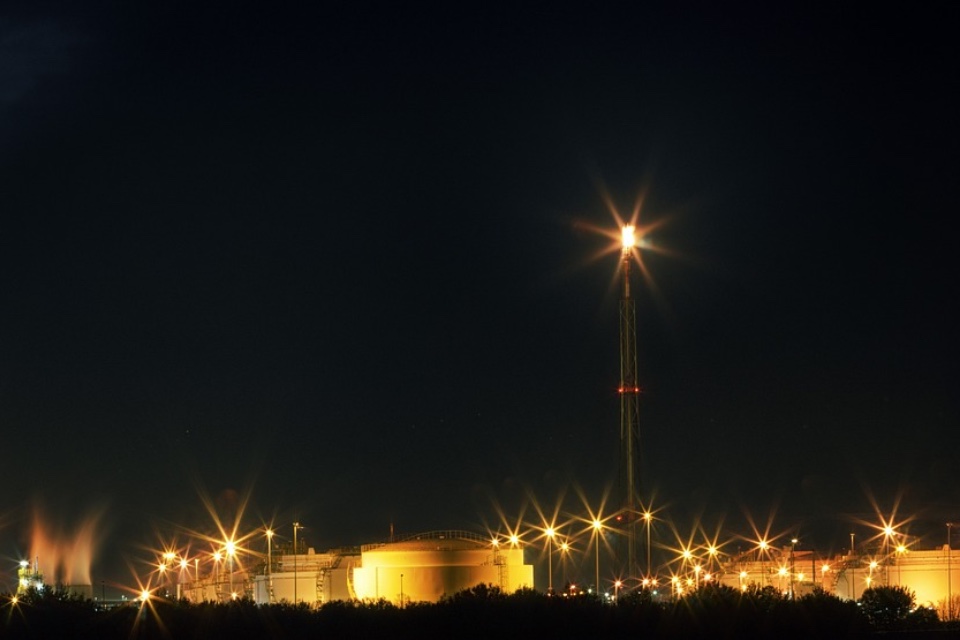Leading CEOs pledge 50% cut in real estate emissions by 2030
https://energymanagementsummit.co.uk/wp-content/uploads/2022/10/office-city-4667143_1280.jpg 960 640 Stuart O'Brien Stuart O'Brien https://secure.gravatar.com/avatar/81af0597d5c9bfe2231f1397b411745a?s=96&d=mm&r=gA group of global firms have committed to reduce their real estate emissions by 50% by 2030 and reach net-zero carbon no later than 2050, as part of a World Economic Forum initiative.
With buildings contributing 38% of all energy-related greenhouse gas emissions, leaders across all industries have a critical role to play in lowering their global real estate emissions.
“While real estate represents nearly 40% of all energy-related GHG emissions, the sector is frequently an afterthought when it comes to an organization’s decarbonization and sustainability strategies,” said Matthew Blake, Head of Financial and Monetary Systems, World Economic Forum. “Leaders across all industries have a responsibility to take action on their real estate GHG emissions to ensure progress in the fight against climate change.”
The following companies have pledged to halve their buildings-related emissions by 2030 and reach net-zero building emissions by 2050:
- Avison Young
- Edge
- GPFI Group
- Ivanhoé Cambridge
- JLL
- Majid Al Futtaim Properties
- Schneider Electric
- Signify
These firms will meet these targets by implementing the Forum’s Green Buildings Principles. Released last year, the Green Building Principles: The Action Plan for Net-Zero Carbon Buildings provides a clear sequence of steps to deliver net-zero carbon real estate portfolios:
1. Calculate a robust carbon footprint of your portfolio in the most recent representative year to inform targets
2. Set a target year for achieving net-zero carbon, by 2050 at the latest, and an interim target for reducing at least 50% of these emissions by 2030
3. Measure and record embodied carbon of new developments and major refurbishments
4. Maximize emissions reductions for all new developments and major refurbishments in the pipeline to ensure delivery of net-zero carbon (operational and embodied) by selected final target year
5. Drive energy optimization across both existing assets and new developments
6. Maximize supply of on-site renewable energy
7. Ensure 100% off-site energy is procured from renewable-backed sources, where available
8. Engage with stakeholders with whom you have influence in your value chain to reduce scope 3 emissions
9. Compensate for any residual emissions by purchasing high-quality carbon offsets
10. Engage with stakeholders to identify joint endeavours and equitably share costs and benefits of interventions
Developed in collaboration with JLL, the World Green Building Council and the Forum’s Real Estate community, the Green Building Principles can be formally adopted by firms and include an Action Plan detailing implementation.
The Action Plan provides globally applicable guidance on best practices to implement the principles for every stakeholder, from owners to occupiers to investors. Signatories will report progress annually as part of their public sustainability reporting and participate in a Practitioners Group to identify solutions around implementation.
Signatories share why they have pledged the Principles:
“More sustainable real estate is essential,” said Coen van Oostrom, Founder and Chief Executive Officer, Edge. “The Principles offer a clear roadmap to help all building stakeholders tackle their emissions and deliver better buildings. The world deserves better buildings and it is entirely possible to significantly reduce the impact of both existing and new buildings.”
“It’s imperative that we address real estate related emissions,” said Christian Ulbrich, Global Chief Executive Officer and President, JLL. “Getting started is often the hardest part and the Principles offer a simple set of steps to do so. We believe it is easier to get to net zero in the built environment than for many companies to get to net zero in their core businesses and the business case is there to support action.”
“The emphasis on bringing together the world’s leading businesses and public figures to collectively address issues like climate change and driving social change is fundamental to what Avison Young stands for. ESG considerations across the board must be addressed by the real estate sector — buildings have a huge impact on our everyday lives and the planet,” said Mark E. Rose, Chairman and CEO, Avison Young. “We are thrilled to adopt the Green Building Principles and demonstrate to our peers that reaching net zero is not only possible but essential for a better built environment and more resilient and successful cities.”
“By nature, real estate requires long-term thinking and so we have a duty to invest with conviction and build a legacy for future generations,” said Nathalie Palladitcheff, President and CEO, Ivanhoé Cambridge. “We have a collective opportunity and responsibility to decarbonize the built environment and this ambitious commitment will require a transformation of practices across the whole real estate value chain.”
“The industry has traditionally looked at investments in sustainability as a trade-off with other aspects like customer experience, but it’s very clear that we need to shift our mindset,” said Ahmed Galal Ismail, CEO, Majid Al Futtaim Properties. “Sustainability is actually a trade-on and sustainable assets are more valuable. We are committed to transitioning our portfolio and proving what is possible in alignment with the Principles.”
“We have the innovation to both transform the current building stock through electrification and digitalization and develop smart, green buildings of the future,” said Philippe Delorme, Executive Vice President, European Operations, Schneider Electric. “Schneider Electric is proud to adopt the Principles and demonstrate how we can transition buildings to be healthier, more efficient and ultimately net-zero carbon.”
“We continue to be committed to the planet and addressing our real estate footprint” said Harsh Chitale, CEO, Digital Solutions Division, Signify. “The Principles are an ideal way to help every type of company address emissions from the buildings they own and/or occupy.”
“As a facility management company, we play a major role in the drive for adoption and implementation of emission reduction programs,” said Dr. MKO Balogun, Group CEO, GPFI Group. “Our role working with occupiers, owners, and developers of real estate gives us the leverage to drive that commitment, and we are glad to be joining other global leaders on this journey.”











